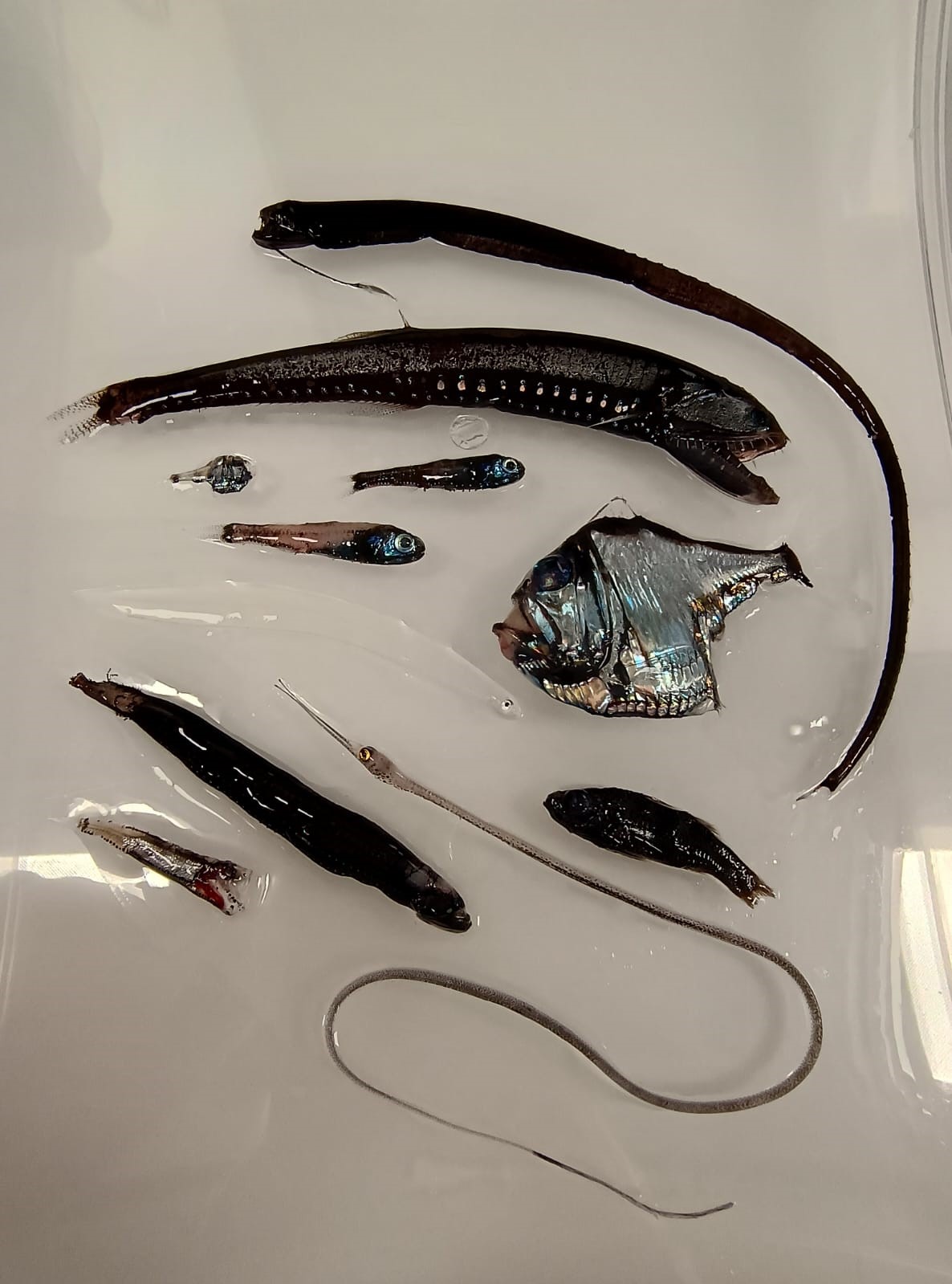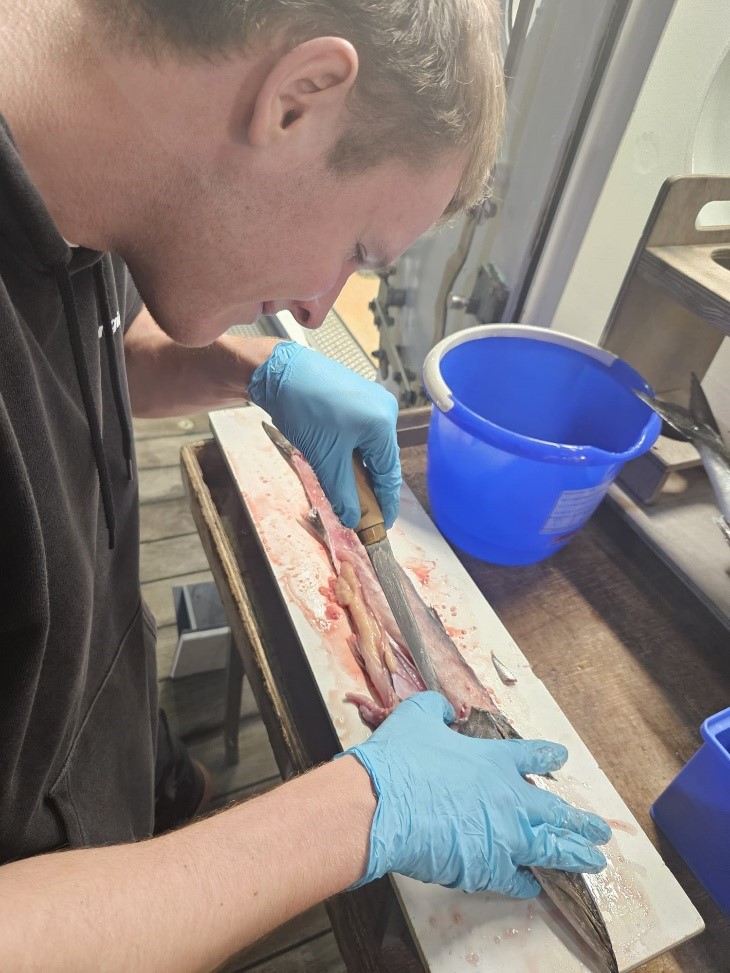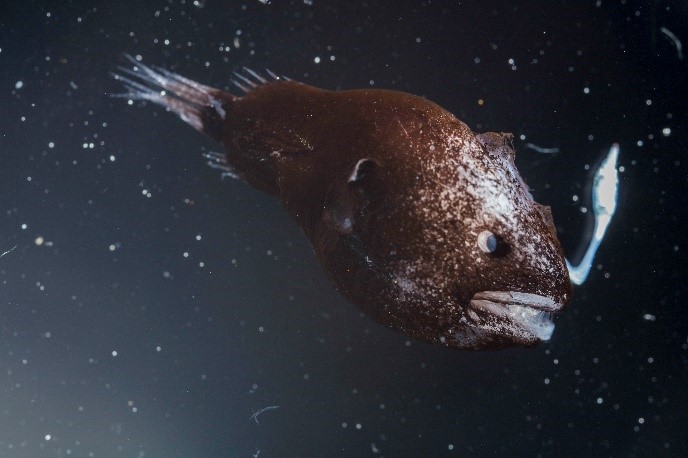Aboard the Merian we are investigating the entire food web off Madeira. This includes all water depths and therefore all ocean habitats. The different trophic levels range from tiny algae, called phytoplankton, to the large predatory fish that hardly have to worry about being hunted. The diversity of fish in the Eastern Atlantic is huge and the methods for sampling them are also diverse.
With plankton nets, such as the multi-closing net, we can catch organisms that are too large to slip through a mesh size of 335 µm. With this net it is possible to sample a specific water layer and thus obtain a depth-resolved picture of the zooplankton composition. Fish larvae can be caught very well with nets of this type and gently brought to the surface.
We catch deep-sea fish such as lanternfish, dragonfish or the famous deep sea anglerfish with a larger net which is towed pelagically at a depth of up to 1000 m. This net has a much larger opening, with which we can filter many times more water than with the plankton nets but also a larger mesh size (4 mm). When such a net comes on deck it is always exciting to see what strange-looking fish, shrimps or jellyfish have been collected in the codend. It is not uncommon for us to come across individuals that we have never seen before. Bizarre snipe eels or strangely shaped hatchetfish are just a few examples of this great diversity.

All these fish are sampled in two different ways. On the one hand, we take a genetic sample in the form of a small piece of caudal fin, which is preserved in ethanol. On the other hand, we take a piece of muscle meat from the organisms for an isotope sample. This sample can later be used in the laboratory to determine the exact concentration of certain carbon, nitrogen and sulphur isotopes. The concentrations and ratios of these isotopes to each other can later be used to determine the position of the sampled organism in the food web.

We are therefore trying to get a picture of the food web in the waters around Madeira by taking as diverse a range of samples as possible in order to gain a better understanding of the ecosystem. So every net haul that comes on board is exciting and important to complete the picture. We are looking forward to the net hauls during the last days on board to complete our data set.
Greetings from the Maria S. Merian,
Anton Höper
